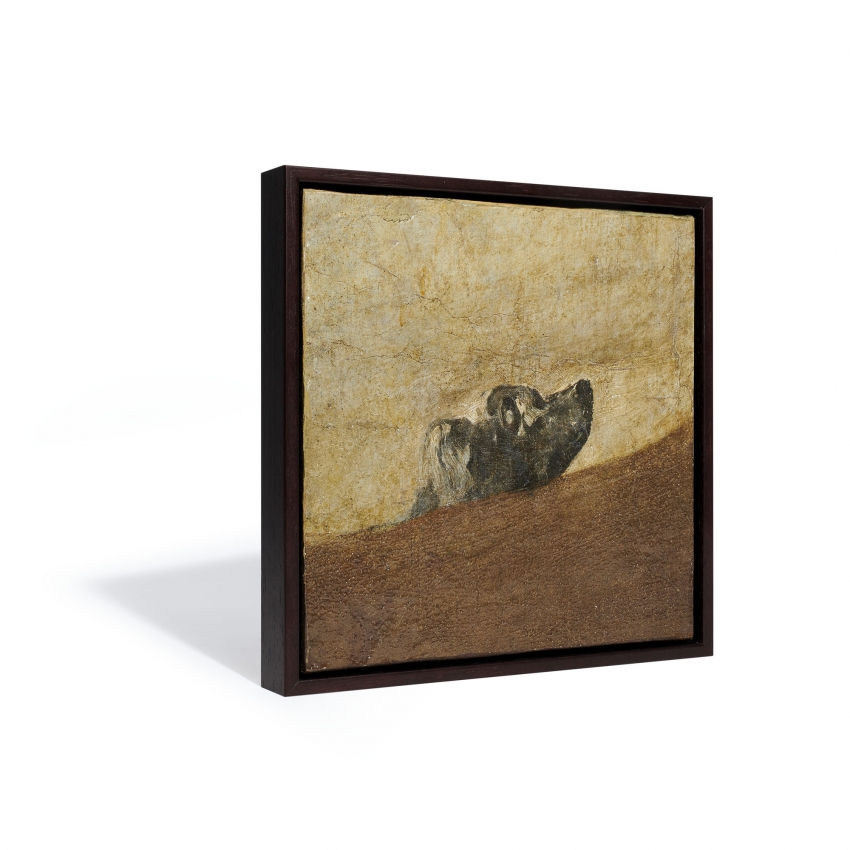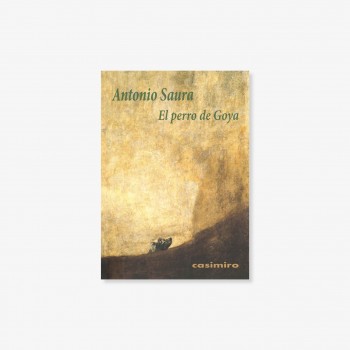The Black Paintings and Goya’s Last Works
In 1819, Goya bought La Quinta del Sordo (The House of the Deaf Man), a country house with farmland that stood on a rise overlooking the far side of the River Manzanares, on the outskirts of Madrid. The painter, who fell seriously ill shortly after moving there, decorated the walls of the two main rooms on the ground and first floors with mural paintings. As X-ray studies appear to reveal, the walls may have originally been painted with landscapes of the villa featuring bright colours and compositions that were altogether gentler than those we know today. On top of them, he painted what are now called the Black Paintings, enigmatic compositions that could be seen as a continuation and résumé of the prints in Los Disparates, which date from the same period. The original arrangement of the fourteen pieces is unknown, which makes them difficult to interpret. Their themes appear to be evil, terror, ignorance and death. In 1823, the artist, who was planning to leave for Bordeaux, donated the estate to his grandson Mariano, and after several changes of owner, it was bought in 1873 by Baron Frédéric Émile d’Erlanger (1873–1911), who commissioned Salvador Martínez Cubells, then the restorer at the Museo del Prado, to transfer the paintings to canvas. The baron showed the paintings at the International Exhibition of 1878 in Paris, and he donated them in 1881 to the Spanish state, which assigned them to the Museo del Prado. It is not known whether they were left unfinished when Goya departed for France in 1824, but they are described by Charles Yriarte in his monograph on Goya of 1867, and by Brugada in the inventory of La Quinta del Sordo, whose date is uncertain but which must be subsequent to the artist’s death and Brugada’s arrival in Spain in 1831. The paintings underwent some modifications during their transfer to canvas and their restoration and it is hard to tell if they followed an iconographic programme, but all the pieces have a tormented and disturbing character. Common to all of them is an exaggeration of gesture and attitude, remarkably free brushwork involving energetic sweeps of the brush, almost splashes in some cases, and strong contrasts of light and colour. Goya painted them with total freedom, no trace of academicism remaining, and endowed them with a deeply felt emotion and a strange beauty that have never ceased to attract and perplex visitors since they were first displayed in the Prado at the end of the nineteenth century. Moreover, the fascination they have exerted on Goya’s successors has grown unabated since the nineteenth century, with avant-garde movements like Expressionism and Surrealism.
The Drowning Dog
This possibly unfinished painting, which belonged to the group on the upper floor of La Quinta del Sordo, is perhaps the most enigmatic of all the Black Paintings, and it is imposible to determine what the painter intended. The head of a dog is seen appearing behind a slope, or perhaps sinking into marshy ground. The animal looks upwards with an almost human gaze, producing a deeply unsettling effect in the viewer, which is exacerbated by the vast empty space occupying most of the picture over its head. The sense of anxiety, the sparseness of the motifs and the simplification of the environment have all become a source of inspiration for contemporary artists, and some have regarded its minimalism and almost complete lack of formal organisation as precedents of abstract painting.
The facsimile edition
The Drowning Dog (Francisco de Goya, ca. 1820-1823) is the work selected for the Museo del Prado's first limited series of facsimiles: an exact replica of a full-scale fragment of tha painting. The facsimile faithfully reproduces the precise colour and relief of the original painting. The craftsmanship and technical expertise involved in the production of this piece resemble that of an artistic creation, with the aim of reproducing the original apperance of the canvas as if it were taken directly from the walls of the Prado.
The digitisation techniques involved in the non-contact scanning of the original artwork, coupled with a delicate process that combines cutting-edge technology and artisanal work, result in the creation of a three-dimensional facsimile of a section of The Drowning Dog. These intricate details that are captured and reproduced allow the painting to be appreciated in all its complexity. Thanks to this, aspects such as the shape and relief of the brushtrokes, the texture of the support and the visible marks of the passage of time on the artwork can be seen, (touched) and experienced for the first time outside the Museum.
Factum Foundation is globally recognised as a leader in advancing and implementing digital technology for the preservation of artistic and cultural heritage. It designs and develops bespoke equipment and software to achieve the best results in digitisation and digital output. Factum’s non-contact methodology is increasingly becoming essential in the world of conservation and preservation and is also helping to define the role that facsimiles can play in the protection of our cultural heritage.








